Bonjour! Spring is finally here! I love seeing the warm sunshine and the colorful flowers in bloom! This past month has been super busy getting ready for the International Festival and learning about all of the different continents and countries. The children also enjoyed our guest speakers from different backgrounds and cultures.
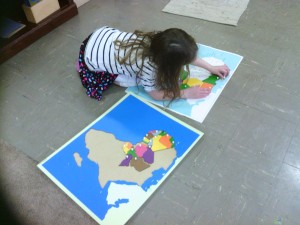
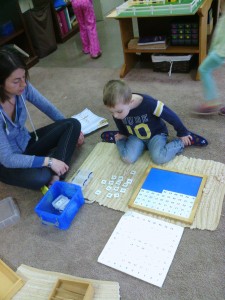
The first week I introduced the seven continents to the children by showing them our continents puzzle. We discussed the four main countries in North America, which are The United States of America, Mexico, Canada, and Greenland. The children also learned about our flag, which consists of 13 horizontal stripes, which are red, white, and blue and represent the first colonies and states in the union. The flag also has 50 stars, which represent the 50 states in the Union. The children also learned about Christopher Columbus, the climate, and cultures of North America. We also discussed South America and their famous Andes Mountains, The Amazon, and the Rainforest. The children really liked learning about the four layers, which are the forest floor, the understory, the canopy, and the emergent layer.
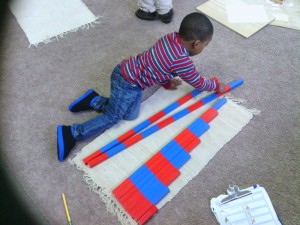 .
. 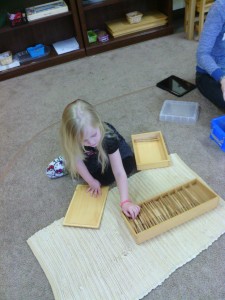
The second week I introduced Africa. I explained to the children that Africa is the second largest continent next to Asia. The children learned about North Africa, South Africa, West and East Africa, and also about Central Africa. We had fun discussing their homes and how their houses are made of dried mud, stones, and sticks and how people in Central America live in villages and tend to only cook over an open fire since they do not have electricity. They also learned that the largest cities in Africa are Cairo, Egypt, Lagos, Nigeria, and the Democratic Republic of the Congo. Throughout the week the children learned about savannas, deserts, and rainforests that make up Africa. We also talked about how thousands of different kinds of plants grow in the rainforest, and how some of those plants provide food and medicine for people. At the end of our Africa lesson we went over the animals, people, language, music, and housing of Africa.
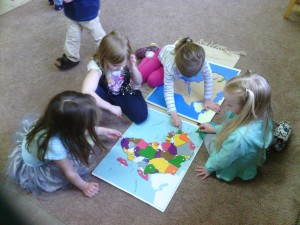 .
. 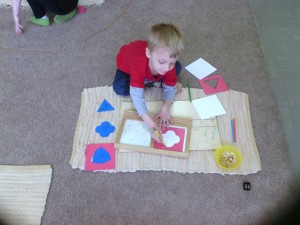
The third week we focused on Asia. We discussed how Asia is the largest continent in the world. We mainly focused on China, Japan, and India. The first few days we learned about China. The children were able to see pictures of the largest Buddha, which is carved in the side of a cliff in China. It took workers about 100 years to carve! They also saw pictures of children at school, the beautiful mountains, and their parades that they have when they celebrate the New Year. The children enjoyed learning about the Huang River, which is the third longest river in the world. It is also called the Yellow River because the yellow soil turns the river waters yellow. They also learned about their traditional clothing, families, and how most Chinese people live on farms and work in fields called Paddies. We also went over how they do not have an alphabet, but instead a symbol called a character. And lastly, we went over traditions, schooling, and how reading short stories or folktales are very popular. The second country we talked about was Japan. We discussed the weather and seasons, cultures and traditions, school and family, and also about country and city life in Japan. The children also learn more about their food and how they have fun.
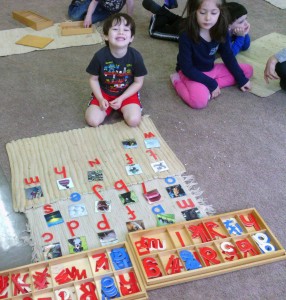
During the third week we dove into India. The children learned India is a country with seventeen official languages, races, and religions. The children loved learning that India has 45,000 plant species, some of which are not found anywhere else in the world, and that India is divided into 25 states, each with its own governor, members of parliament, and lawmakers. The children also enjoyed learning about their traditional dressings, family life, and education.
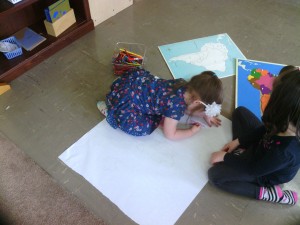 .
. 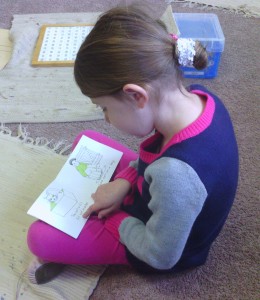
Our last week we were super busy practicing our lines and songs and making special crafts for our festival. Amongst all of the busyness the children learned about France, Spain, and the Netherlands. The children had so much fun learning to say “good day,” “hi,” “thank you,” “thank you very much,” and “goodbye” in French. The children were able to learn about their foods, different cultures and traditions, holidays, work that they do, farming, and things to do when you visit each country. While we were learning about Spain, the children learned the history behind the Running of the Bulls, Flamenco dancing and were able to watch a short video on these. Although this month has been very busy I really enjoyed teaching the children about the different countries. I loved showing them that all countries are different in many ways but also the same. I hope you have learned a little something and see you next time! Au Revoir!
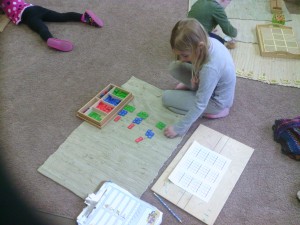
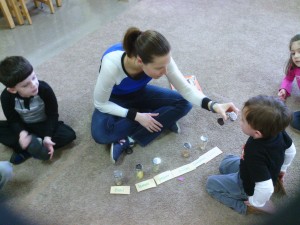
Ashley’s Corner:
This month we have been full of continental fun. We have traveled the world through books,stories and music. We have been learning about different cultures and how they live. We were able to learn different languages through the form of music. Our many visitors took us on amazing trips through Australia, Hungry and Italy with their great stories and food.
In science class with learned about the Bubble lava experiment. You will need a clean, plastic soda bottle, glass, jar, or baby soda bottle test tub, soda bottle can of vegetable oil (the cheaper the better), Food coloring, Alka-Seltzer tablet or fizzy tablets. Now how does it work? First of all, you confirmed what you already knew… oil and water do not mix. The molecules of water do not like to mix with the molecules of oil. Even if you try to shake up the bottle, the oil breaks up into small little drops, but the oil doesn’t mix with the water. Also, food coloring only mixes with water. It does not color the oil.
When you pour the water into the bottle with the oil, the water sinks to the bottom and the oil floats to the top. This is the same as when oil from a ship spills in the ocean. The oil floats on top of the water. Oil floats on the surface because water is heavier than oil. Scientists say that the water is more dense than the oil.
Here’s the surprising part… The Alka-Seltzer tablet reacts with the water to make tiny bubbles of carbon dioxide gas. These bubbles attach themselves to the blobs of colored water and cause them to float to the surface. When the bubbles pop, the color blobs sink back to the bottom of the bottle. Now that’s a burst of color! Your own homemade lava lamp worth those 15 Groovy lava lamps… Now, go ahead and try this at home with your kids, I promise it will a lava fun!!
Music class has been so much fun. The kids have been exploring music notes. They are learning what they look like and what they mean. They have been going over the musical terms for fast and slow, and loud and soft. The children were able to take their knowledge and apply it to their singing and dancing. Our kids had a chance to use the egg shakers and rhythm sticks as well.They leaned some knew songs and Ms.Lisa introduced the kids to her new puppet friends, moose and puppy.
This month, Ms.Michelle had her art students make Koi Fish for their international festival. The koi fish is a Japanese fish that represent good luck and fortune. They turned out beautiful and they looked amazing at the International Festival. The next art project she did with the kids was all about the natural ingredients found on our earth. She had the children paint with mud, clay, tar, and other natural ingredients. The children used their imagination and their creations were great. The kids thought it was really neat to be able to paint with natural things you can find outside!

